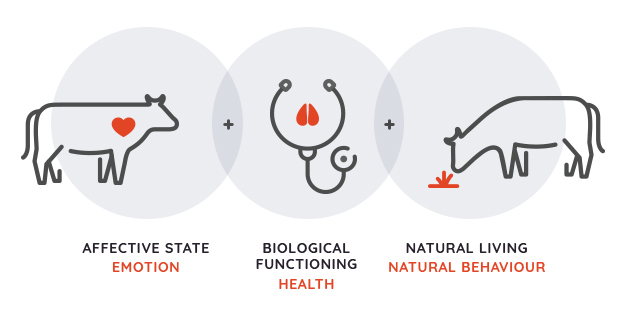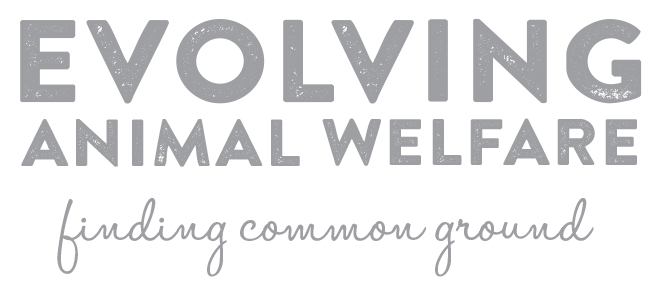Over the past several decades the definition of animal welfare has broadened. Research has shown that cattle feel pain and it’s not only physical, it’s emotional too. Therefore, animal welfare has evolved from simple avoidance of cruelty to fulfilling basic obligations of care. More recently, it has expanded to include their emotional states as well. It’s now represented by three overlapping areas of concern. The animal’s Affective State (how they feel), Biological Functioning (including their health) and their Natural Living (the degree to which they’re able to express “natural” behaviours).
This broader definition is noteworthy because it moves beyond the absence of disease and discomfort to incorporate the presence of positive experiences such as pleasure and happiness. This new definition ensures cattle not only survive but thrive.
The goal of this broader definition is to provide opportunities for cattle to encounter more positive emotional states such as comfort, pleasure, curiosity, confidence and a sense of control. Strategies and opportunities that enhance animal welfare include:
- Providing access to favourable resting sites
- Balancing predictable environments with more stimulus-rich, novel ones
- Encouraging enjoyable behaviours like exploring new settings
- Providing circumstances that enable cattle to engage in bond affirming activities
- Enabling play behaviour and pleasurable interactions with producers
The Three Pillars of Animal Welfare


ANIMAL WELFARE – IT PAYS OFF
The benefits of pain management extend far beyond the animal. Relieving pain is also beneficial to producers. Keeping cattle comfortable keeps them happy and healthy, and when they’re happy, it shows. In their walk and in their overall well-being. By practicing good animal welfare you can expect healthier, more valuable herds.




